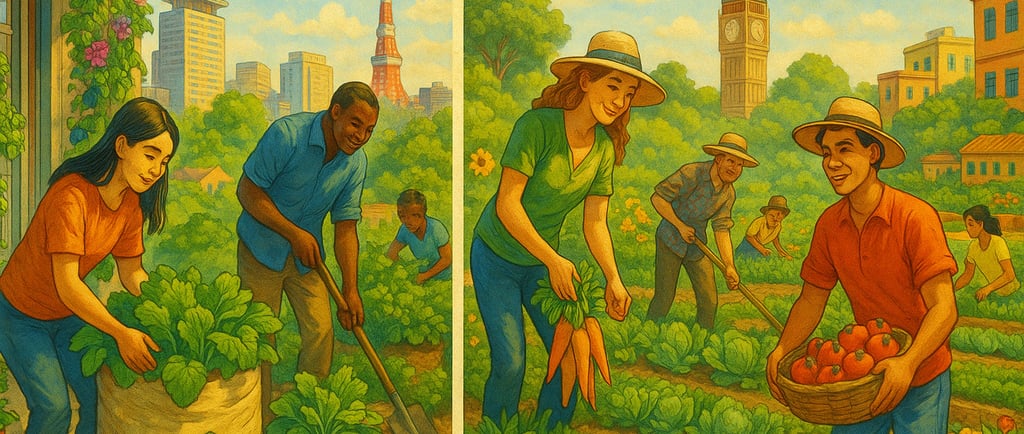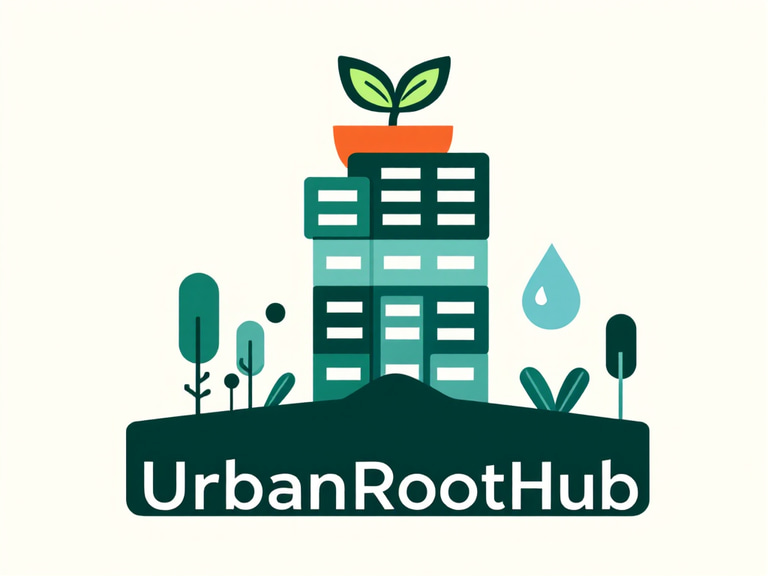Global Gardening Inspiration: Micro-Farm Ideas from Around the World
Discover how cities around the world are transforming rooftops, balconies, and vacant lots into vibrant green spaces through innovative urban gardening. From Tokyo’s vertical gardens to Nairobi’s sack farms, London’s historic allotments, and Havana’s organic urban farms, this post explores real-world examples and proven techniques that empower communities, boost food security, and promote sustainability. Whether you’re a seasoned gardener or just starting out, learn how urban gardening can help you create a healthier, greener, and more connected city life.
Joel L
4/15/20255 min read


Urban Gardening: Greening the World’s Cities
As urbanization accelerates and green spaces dwindle, city dwellers are turning to urban gardening as a practical and inspiring solution. Urban gardening transforms rooftops, balconies, and vacant lots into productive green oases, offering not just beauty but also tangible benefits for food security, sustainability, and community well-being. According to the Food and Agriculture Organization (FAO), urban agriculture can significantly reduce food miles, lower carbon emissions, and improve access to fresh produce in cities.
Urban gardening is more than a hobby—it’s a movement that empowers individuals and communities to take control of their food sources. By growing food locally, city residents reduce their reliance on long-distance supply chains, which is crucial as global populations rise and food systems face increasing pressure. This self-sufficiency is especially important in neighborhoods where grocery stores are scarce or inaccessible.
The benefits extend beyond the plate. Studies from the American Society for Horticultural Science show that gardening can reduce stress, improve mental health, and foster a sense of belonging. Community gardens and local initiatives bring neighbors together, turning shared spaces into hubs of learning, support, and collective action. These gardens not only provide fresh food but also strengthen the social fabric of urban neighborhoods.
Let’s explore how cities around the world are reimagining urban spaces through innovative gardening practices, and how these efforts are shaping healthier, more resilient communities.
Tokyo: Balcony Gardens and Vertical Innovation
In Tokyo, where space is at a premium, residents have pioneered creative ways to grow food in small areas. Vertical gardening, hydroponics, and container planting are widely used to maximize limited space. According to the Japan Times and Nikkei Asia, vertical gardens—often made from recycled materials—allow Tokyoites to grow vegetables and herbs on walls and fences, making the most of every available surface.
Hydroponic systems, which use nutrient-rich water instead of soil, are increasingly popular in Tokyo’s apartments and offices. These systems enable year-round cultivation of crops like lettuce, tomatoes, and peppers, while conserving water and reducing the need for chemical fertilizers. Container gardening, using everything from traditional pots to repurposed household items, offers flexibility and adaptability for urban growers.
Tokyo’s approach demonstrates how innovation and resourcefulness can turn even the smallest balcony into a productive, sustainable micro-farm.
Nairobi: Sack Gardens for Food Security
Nairobi’s rapid urbanization and limited space have given rise to sack gardening, a technique promoted by organizations like the FAO and Urban Harvest. Sack gardens involve filling sturdy sacks—often recycled from local markets—with soil, compost, and fertilizer, then planting vegetables and herbs in holes cut into the sides. This method is highly efficient, making use of vertical space and conserving water.
Sack gardens are especially effective for growing leafy greens and herbs, providing families with a steady supply of nutritious food. Community collaboration is central to Nairobi’s urban gardening movement, with neighbors sharing resources, knowledge, and harvests. According to The Guardian, these gardens have become centers of resilience, helping communities overcome food shortages and economic hardship while fostering empowerment and social connection.
Nairobi’s sack gardens are a model of how simple, low-cost innovations can transform urban food systems and strengthen communities.
London: Allotment Gardens—A Living Tradition
London’s allotment gardens have a rich history dating back to the 19th century, when they were established to address food shortages. Today, these small plots—managed by local councils and often in high demand—offer city dwellers the chance to grow their own food and flowers. The National Allotment Society and Royal Horticultural Society highlight the social and environmental benefits of allotments, which foster community, promote biodiversity, and encourage sustainable practices.
Allotments are more than just gardens; they are vibrant social spaces where people from diverse backgrounds come together to share knowledge, swap seeds, and participate in communal activities. The health and well-being benefits of allotment gardening are well documented, with studies showing improvements in physical and mental health, as well as a deeper connection to nature.
London’s allotment culture is a powerful reminder of the importance of preserving green spaces and nurturing community in the heart of the city.
Havana: Organic Urban Farms and Community Resilience
Havana is internationally recognized for its urban organic farming movement, which began in the 1990s during the “Special Period” following the collapse of the Soviet Union. According to the FAO and Scientific American, Havana’s “organopónicos”—community-run organic farms—have transformed vacant lots and rooftops into productive green spaces.
Community involvement is at the core of Havana’s urban agriculture. Residents work together to plant, tend, and harvest crops, sharing both the labor and the bounty. Many urban farms offer educational programs and workshops, empowering people to learn about organic farming, composting, and sustainable practices. These farms not only provide fresh, local produce but also foster a sense of ownership, pride, and resilience.
Havana’s experience shows that urban agriculture can be a catalyst for social change, building stronger, healthier communities and inspiring other cities to adopt sustainable solutions.
Global Innovations: Micro-Farming in New York, Paris, and Amsterdam
Urban gardening is thriving in cities worldwide, each adapting techniques to local needs and cultures.
In New York City, rooftop gardens are a hallmark of urban agriculture. Organizations like Brooklyn Grange and NYC Parks GreenThumb have turned rooftops into productive farms, providing fresh produce, reducing the urban heat island effect, and creating habitats for pollinators. Community involvement is key, with residents collaborating to plant, maintain, and harvest these shared spaces.
Paris has embraced edible walls—vertical gardens that transform building facades into lush, productive landscapes. City initiatives like Parisculteurs promote urban agriculture on rooftops and walls, improving air quality and urban aesthetics while providing accessible food sources.
Amsterdam’s community gardens are celebrated for their inclusivity and biodiversity. Residents collaborate to cultivate a mix of native plants and seasonal vegetables, creating vibrant green spaces that reflect the city’s culture and commitment to sustainability. These gardens are not just about food—they are about building relationships, sharing knowledge, and fostering a sense of belonging.
These examples highlight the creativity and adaptability of urban gardeners worldwide, offering inspiration and practical ideas for anyone looking to green their city.
Joining the Global Urban Gardening Movement
Urban gardening is a global movement, supported by local and international organizations, online communities, and social media groups. The United Nations and other agencies recognize the role of urban agriculture in enhancing food security, promoting environmental awareness, and building community resilience.
Getting involved is easier than ever. Local gardening groups, community gardens, and online platforms offer opportunities to share knowledge, exchange resources, and celebrate successes. Whether you’re interested in vertical farming, hydroponics, or traditional soil gardening, there’s a wealth of information and support available to help you get started.
By embracing urban gardening, individuals and communities can transform their cities, improve their well-being, and contribute to a more sustainable future. Together, we can create greener, healthier, and more resilient urban environments for generations to come.
References:
